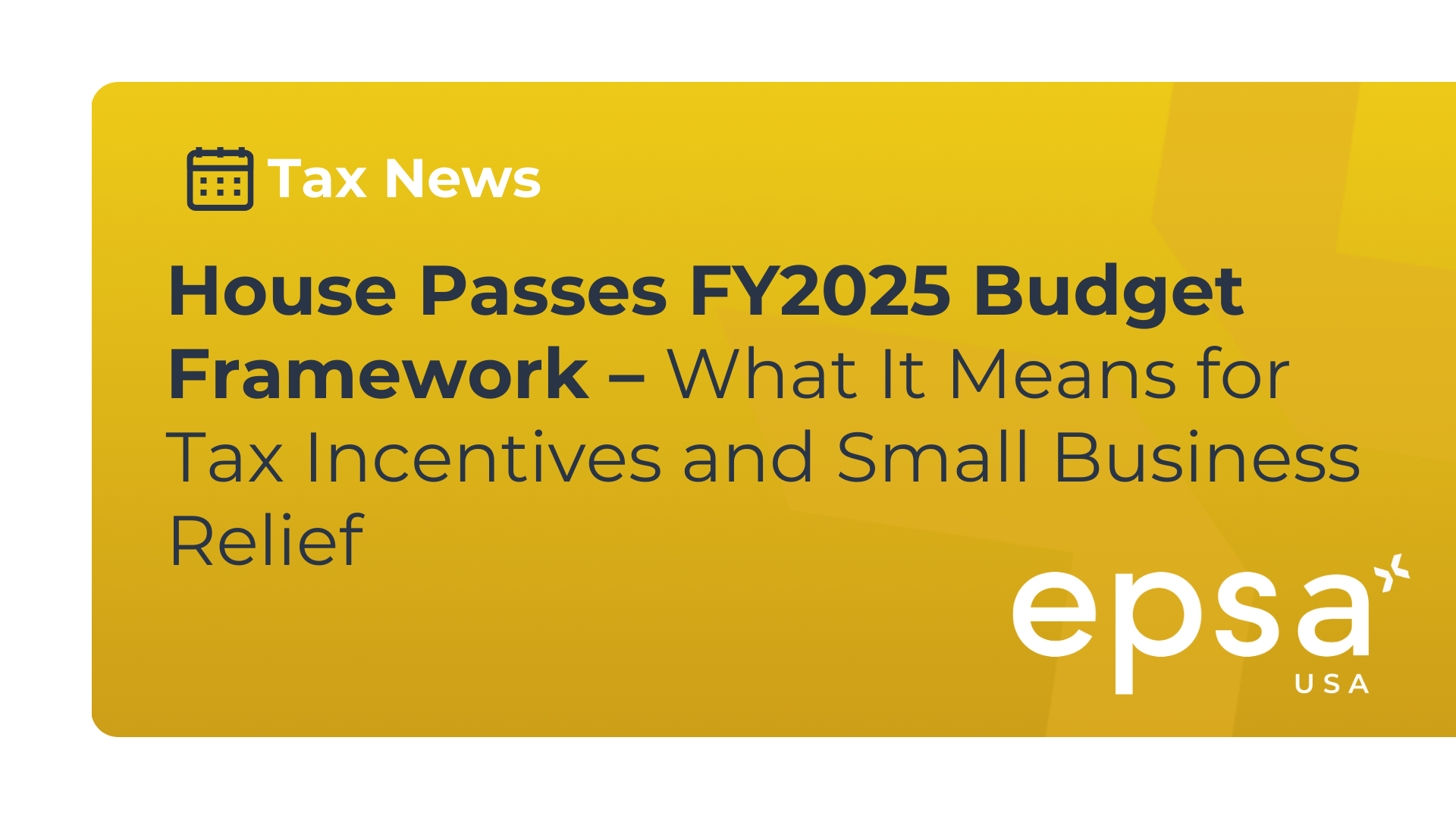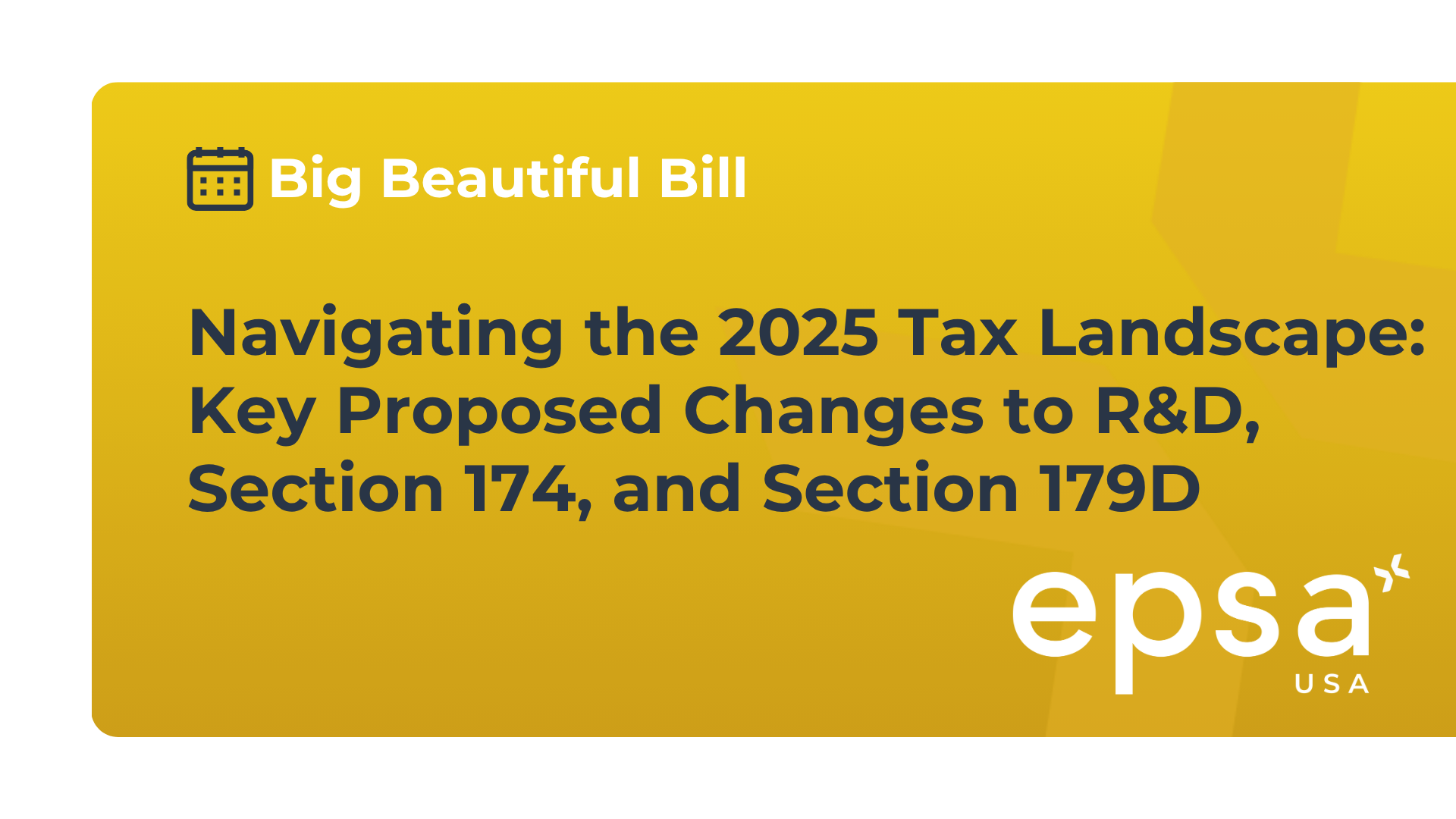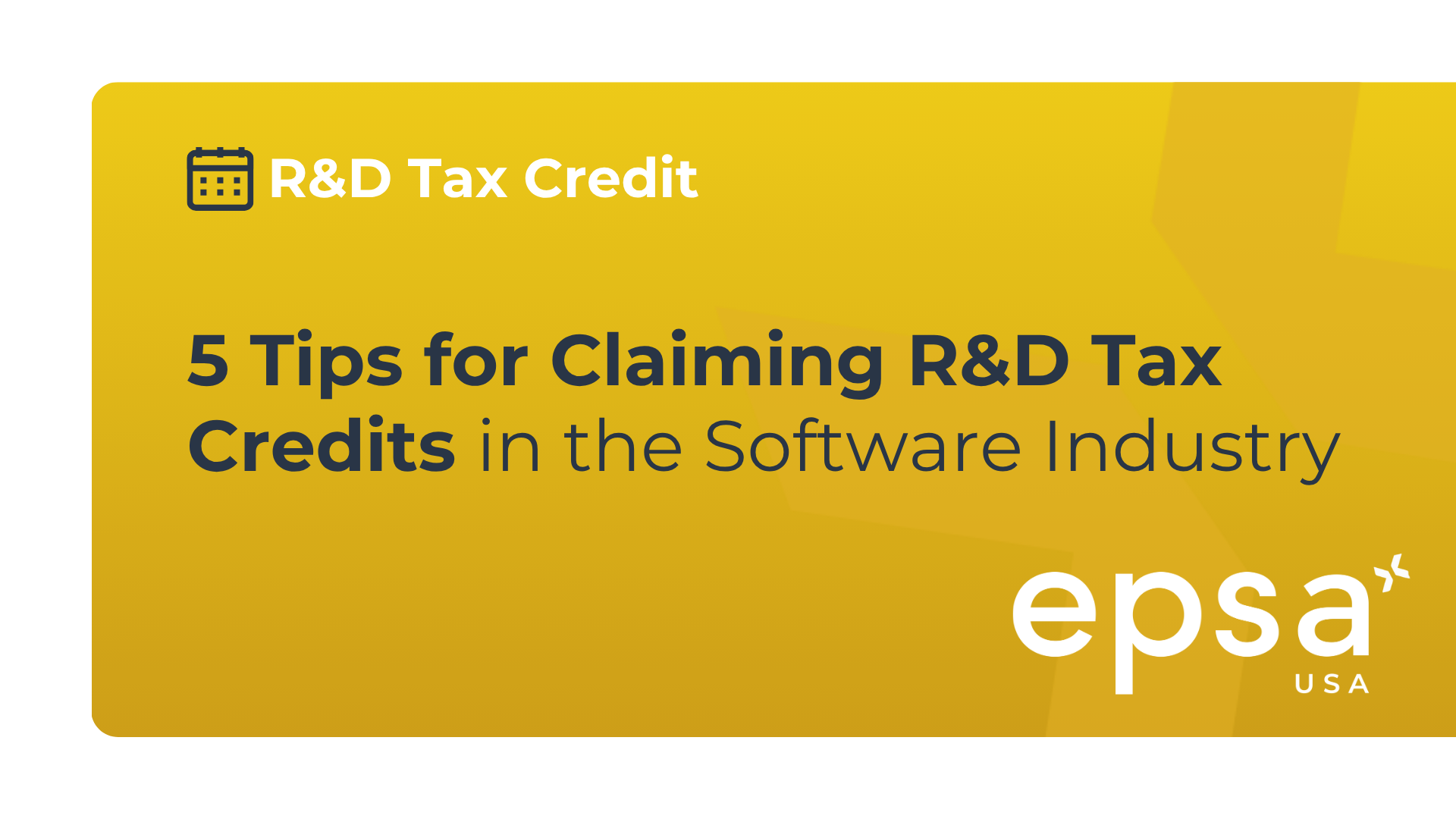House Passes FY2025 Budget Framework – What It Means for Tax Incentives and Small Business Relief
April 11, 2025 – By EPSA USA
On April 10, 2025, the U.S. House of Representatives narrowly passed the final version of the FY2025 Budget Resolution (H. Con. Res. 14), officially aligning with the Senate’s amendments from earlier this month. While this resolution doesn’t change any laws—yet—it does open the door for significant tax and spending legislation that could reshape the business landscape.
For architecture, engineering, manufacturing, and tech firms alike, this is a moment worth watching closely.
What Is the Budget Resolution—and Why Should You Care?
Think of a budget resolution as Congress’s roadmap. It sets overall priorities for spending and revenue, but more importantly, it allows lawmakers to begin work on budget reconciliation bills. These reconciliation bills carry the real legislative weight and only need a simple majority in the Senate—bypassing the usual 60-vote requirement.
Translation? We could see real tax reform much faster than usual.
Key Developments That Could Affect Your Business
- ➤ Section 174 R&D Expense Fix Is Back in the Spotlight
Since 2022, businesses have been required to amortize domestic research and experimental (R&E) expenses over five years instead of deducting them immediately. This has created cash flow headaches and increased compliance complexity for many companies—especially those in innovation-heavy industries. The newly passed resolution gives lawmakers a pathway to reverse that change and reinstate full expensing of R&D costs.
- ➤ More Tax Relief on the Table
In addition to the potential 174 fix, there’s renewed discussion around extending provisions of the Tax Cuts and Jobs Act (TCJA), such as bonus depreciation and the Section 179 deduction. There’s also potential for expansion of qualified business income (QBI) deductions, which could benefit owners of pass-through entities.
- ➤ Spending Cuts Also in the Mix
While details remain scarce, the resolution signals interest in reducing non-defense discretionary spending. Some federal programs could be impacted—though White House officials have stated Medicaid will remain protected. Still, it’s a reminder that policy changes may come with trade-offs.
What Happens Next?
Now that the resolution has cleared both chambers, the heavy lifting begins. The House Ways and Means Committee and the Senate Finance Committee are expected to begin drafting legislation that will outline actual tax law changes in the coming weeks.
For advisors, CFOs, and business owners, this is the time to:
- Stay on top of reconciliation bill drafts and proposed tax provisions
- Evaluate how an R&D expensing fix could change your current accounting methods
- Forecast cash flow impacts based on potential depreciation and deduction changes
EPSA USA’s Take
At EPSA USA, we help clients navigate uncertainty with confidence. Whether it’s the R&D Tax Credit, Section 174 amortization, or 179D deductions for green buildings, our team is keeping a close eye on Washington—and how it impacts your bottom line.
Tax policy may be shifting, but the goal remains the same: give businesses room to innovate, grow, and thrive.
Have questions about what this means for your firm?
Reach out to our experts at EPSA USA today to explore how potential reforms could create new savings opportunities for your business.
Share this article




